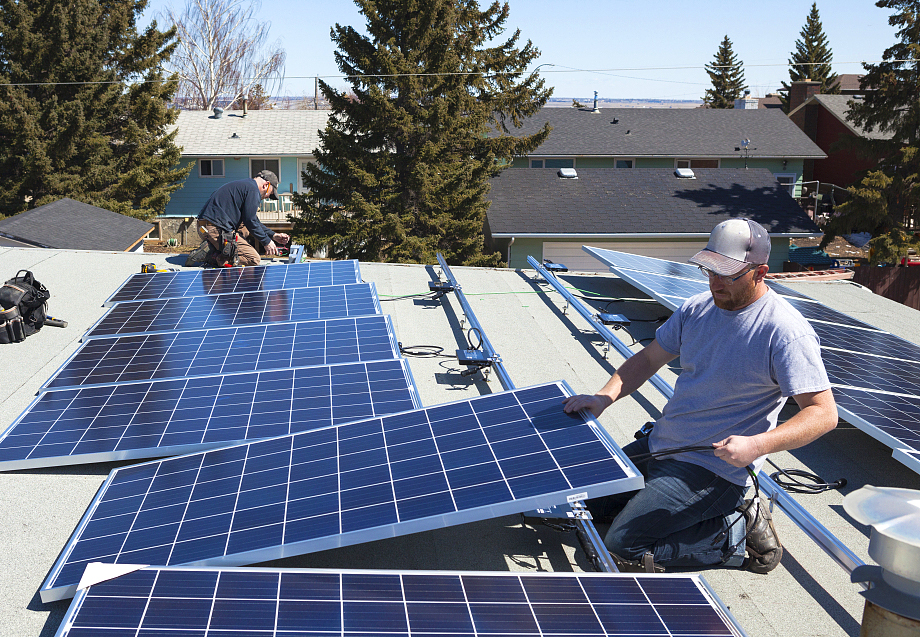summarize
In the following presentations, you will find a simple explanation of how photovoltaic systems work and their main components. In this article, photovoltaics are compared to rainwater in order to understand the fundamentals more intuitively. Here, we will continue to use the same analogy to explain a complete photovoltaic system.

introduction
A photovoltaic system works like a rainwater harvesting system. The amount of water collected varies with the weather: some days there is heavy rain, some days there is none, so some days there is a lot of water collected and some days there is very little.
Likewise, the amount of electricity generated by photovoltaic systems also changes according to weather conditions. The brighter the weather, the more electricity the photovoltaic system produces. In cloudy weather, less power is generated.
Rainwater harvesting systems and photovoltaic systems not only work similarly, they also have similar components, with each rainwater system component performing a similar function as one of the components in the photovoltaic system.
Properties ———— Rainwater system ———— photovoltaic system
Collection method ———— roof ———— photovoltaic module
Control mode ———— valve ———— electrical components
Storage method ———— water tank ———— battery
Transmission method ———— pipeline ———— wire
Application scenarios ———— Shower… — Lights, mobile phones
Map
In a stormwater system, the part that performs a similar job is the roof of the house. If electricity is analogous to water, then solar panels collect sunlight the same way a roof collects rain.
The roof collects water that falls from the sky, so it can be stored for future use. Solar panels collect sunlight from the sky, so it can be stored for future use as electricity.
The larger the roof area, the more water will be collected when it rains. The larger the surface of the solar panel, the more electricity is collected when the sun shines.
If it rains heavily, a large amount of water will be collected in a short period of time, and if it rains lightly, only a small amount of water will be collected in the same period of time. If the sun is bright, a lot of electricity will be generated for a short time, while if it is cloudy, only a small amount of energy will be collected in the same time.
If it doesn’t rain, no water will be collected. At night, no solar energy is collected.
store
Batteries store energy and provide electricity when needed.
Water is needed when there is no rain and electricity is needed when there is no sun. Rainwater harvesting systems and solar photovoltaic systems must have a storage system. Batteries in solar photovoltaic systems have a similar function to water storage tanks in water systems.
Water storage tanks can be used for a period of time after it stops raining. The battery can be used for a period of time after the sun goes down.
If it rains a lot and no one uses the water a lot, the storage tanks will fill up. If there is a lot of sun and no heavy use of electricity, the battery will be fully charged.
If water is consumed when there is little rain, the water level in the storage tank gradually drops and will soon be exhausted. If people use electricity when there is little sunlight, the amount of power in the battery will gradually decrease, and soon the battery will be out of power.
Flow control
Some devices, such as charge controllers and switches, control the current in the photovoltaic system. In order not to impact the power grid, there is also an anti-reflux device, which will control the electricity generated within a certain range, usually monitoring the power of the transformer it passes through, and finally adjusting its own power generation.
There are valves on the inlet and outlet pipes of the storage tanks to control water use. Faucets and showers also use valves, so we can regulate the flow of water. The photovoltaic system has charging controllers, switches, inverters and other equipment. Through these “valves”, we can control how much energy enters and leaves the battery and enters the electrical device.
transmit
Wires are responsible for transporting electrical charge.

Both water and electricity need to be moved from one place to another.
In order to transport water from one place to another, pipes are used. In order to transport electricity from one place to another, wires are used.
Large pipes allow water to flow more easily than small pipes, so large pipes are needed when large amounts of water need to be moved quickly. Large wires allow current to flow more easily than small wires, so use large wires when large amounts of electricity need to be moved quickly.
If the pipes are not connected properly, leaks can occur, causing the water not to all reach the equipment. If the wires are not connected correctly, the current will not reach all the places the equipment needs.
In short, rainwater harvesting is very similar to photovoltaic power generation, only to make a similar comparison for everyone to better understand.
